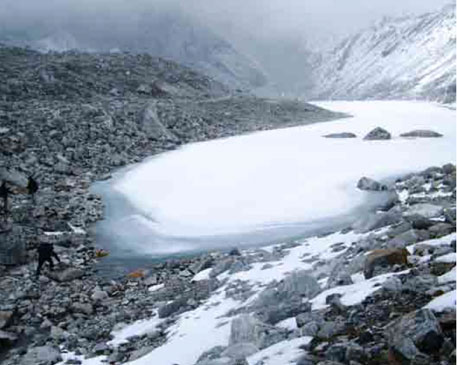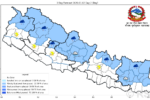A glacial lake outburst flood (GLOF) is a release of melt-water from an ice-dam or a moraine glacial lake due to dam failure.
GLOFs often result in catastrophic flooding downstream.
Such incidents involve a sudden release of water, which tend to be rapid events, lasting hours and sometimes even days.
They also result in a large downstream river discharge.
It is a type of outburst flood that occurs when a dam containing a glacial lake fails. The dam can consist of glacier ice or also a terminal moraine.
Such failures can happen due to erosion, an avalanche of rock or heavy snow, a buildup of water pressure, an earthquake, or massive displacement of water in a glacial lake, or a volcanic eruptions under the ice.
Nepal
Even though such GLOF events have occurred in Nepal for several decades, the Dig Cho glacial lake outburst, which occurred in 1985, has triggered a detailed study of this phenomenon.
Nepal’s five lakes have been potentially dangerous namely, Dig Tsho, Imja, Tsho Rolpa, Lower Barun, and Thulagi, all lying above 4100 m.
Dangerous glacial lakes also exist in parts of Tibet that are drained by streams crossing into Nepal. This has raised the possibility of outburst incidents in Tibet causing downstream damage here in Nepal. The Gandaki River basin is reported to contain as many as 1,025 glaciers and 338 lakes.
Glacier floods, at times, represent far-reaching glacial risk — the risk with the highest potential of damages and disasters.
(With inputs from Agencies)









Comment